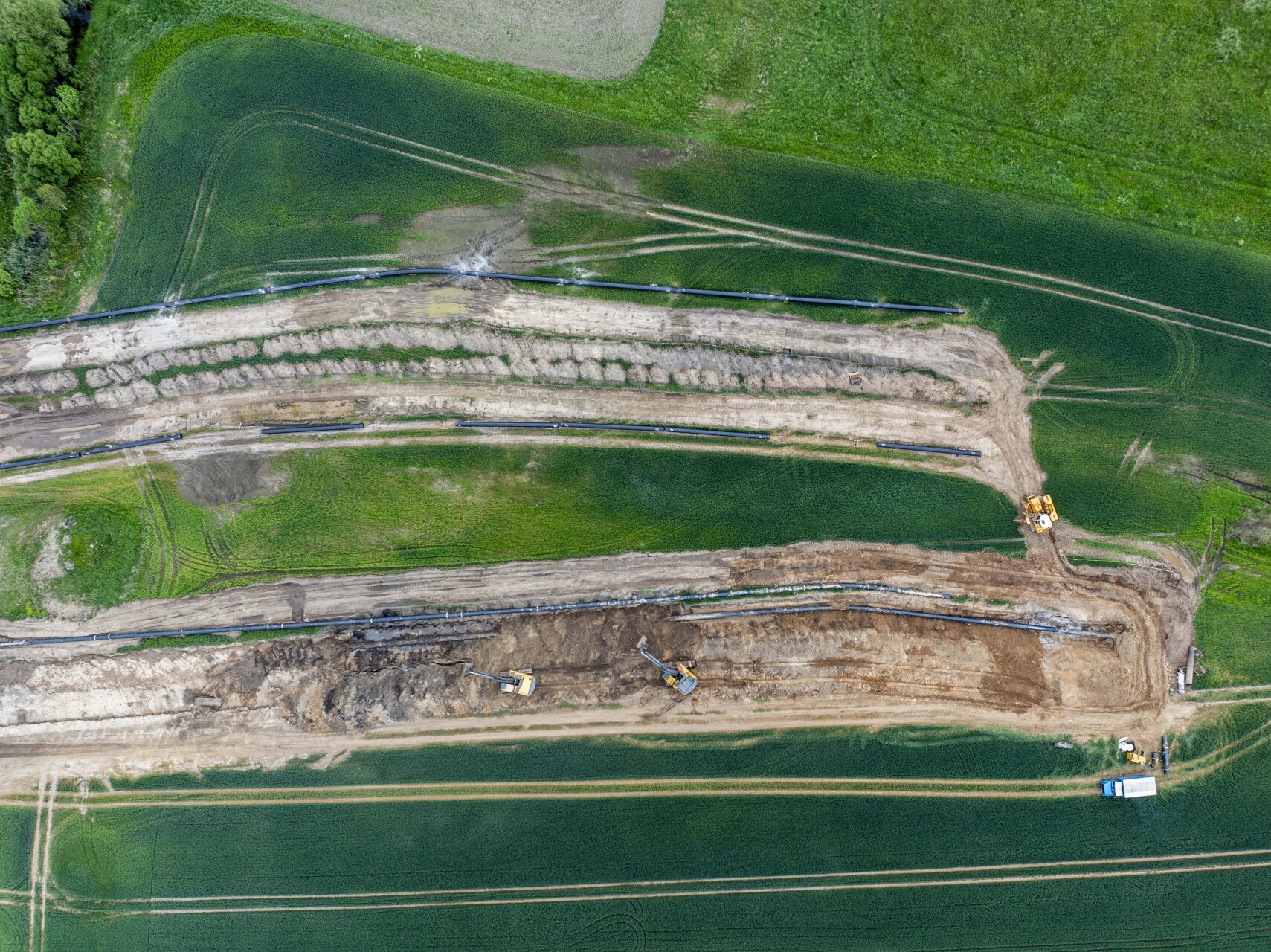
Lithuanian gas transmission system operator Amber Grid reported revenue in the first half of this year amounted to EUR 35 million, the same as in the same period last year. The majority of revenue – EUR 29.5 million – was earned from transporting natural gas, EUR 5.4 million – from system balancing products.
"Revenue in the first half of 2025 remained stable, despite the fact that regulated natural gas transmission prices increased by an average of 7.4% in 2025 compared to 2024. The volumes of energy transmitted via Amber Grid’s transmission system did not decrease. The system operated reliably, with the largest increase in transmission volumes seen in the Latvian direction – more than doubling compared to the first half of 2024. Profitability indicators were slightly affected by increased costs,” said Gytis Fominas, CFO of Amber Grid.
Amber Grid's net profit for the first half of 2025 amounted to EUR 2.75 million and was 20.3 percent lower than in the first half of 2024 (EUR 3.45 million). The lower profit was due to slightly higher costs, which increased by EUR 0.6 million compared to the same period last year.
The adjusted EBITDA (earnings before interest, taxes, depreciation and amortization) for the first half of 2025 was EUR 15.4 million, compared to EUR 13.7 million in the same period last year. The growth in EBITDA increased due to the higher regulated return on investment determined by NERC (National Energy Regulatory Council of Lithuania) in 2025.
Amber Grid's operating expenses in the first half of this year amounted to EUR 12.1 million and, compared to the corresponding period in 2024, increased by EUR 0.6 million or 5.1 percent. Natural gas purchase costs, which always constitute a significant part of costs, decreased by 12.7 percent in the first half of 2025 and amounted to EUR 7.4 million (EUR 8.4 million in the first half of 2024).
Gas transmission volumes for the first half of 2025
Consumption. During the first half of 2025, 8.7 terawatt hours (TWh) of gas were consumed in Lithuania, or 6 percent less than in the first half of 2024, when the country's gas demand reached 9.2 TWh. The decline in gas demand in Lithuania was mainly due to a one-third decrease in gas use for fertilizer production. However, this was partially offset by increased gas demand in electricity generation.
Gas transportation. From January to June 2025, a total of 16.5 TWh of gas was transported through the Lithuanian gas transmission system, excluding transit to the Königsberg region. This is 23.1 percent more than last year at the same time, when 13.4 TWh of gas was transported through Lithuania. The increase in gas transportation was mainly driven by the fact that this year the Balticconnector pipeline, which connects Estonia and Finland, operated under normal conditions. Additionally, gas transportation volumes increased towards Latvia and through Santaka towards Poland.
Export. 1.6 TWh of gas were transported to Europe via the GIPL pipeline connecting Lithuania and Poland. Additionally, 6 TWh of gas were transmitted through the Lithuania–Latvia interconnection to meet the needs of Latvia, Estonia, and Finland, as well as for storage in the Inčukalns underground gas storage facility.
Import. The Klaipėda LNG terminal supplied 86.8% (14.3 TWh) of all gas transported through the system to Lithuania and the other Baltic States. Gas flows from Latvia to Lithuania accounted for 10.2% (1.7 TWh), and from Poland – 2.5% (0.4 TWh). Biogas producers injected 92 GWh of biomethane into the system – a 65.6% increase compared to the first half of 2024.